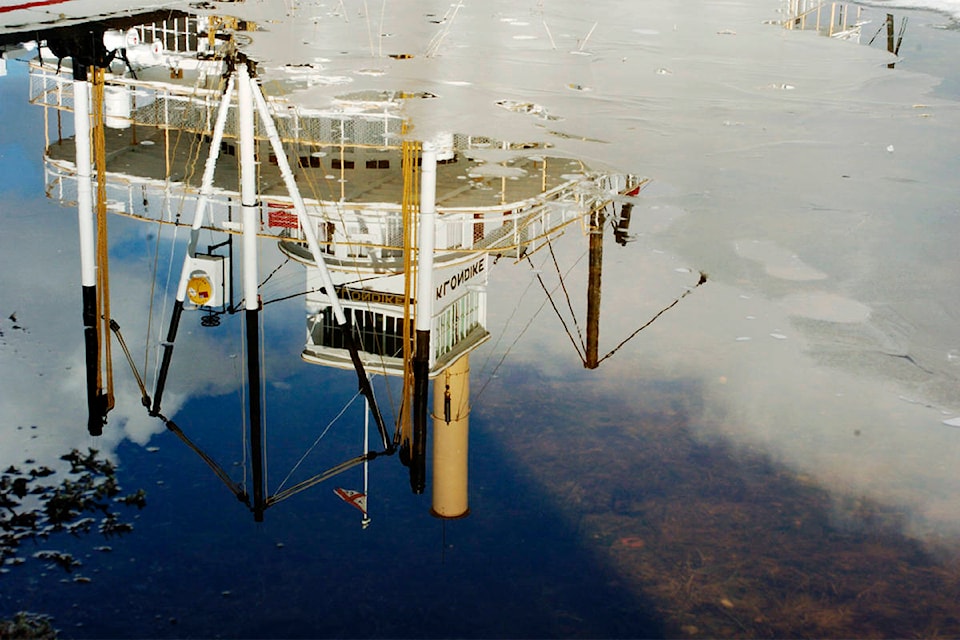The Canadian North is feeling the impacts of climate change more acutely than the rest of the country, with a portion of the Yukon seeing one of the largest temperature increases nationwide, according to a newly-released federal report on climate change.
Entitled Canada’s Changing Climate Report, the eight-chapter document, released April 1, is essentially a summary of decades of data showing how Canada’s climate has changed as well as explanations of what’s causing the changes and their impacts.
It’s the first of several to be released as part of a larger project led by Natural Resources Canada called Canada in a Changing Climate: Advancing our Knowledge for Action.
Canada, overall, is warming at twice as fast as the rest of the world on average, according to Canada’s Changing Climate Report, with the country’s average annual temperature having risen 1.7 C between 1948 and 2016. However, the North has been warming faster than the south, with the territories seeing a 2.3 C increase — three times the global average — during that time frame.
Broken down into seasons, winter saw the largest temperature jump, with the average winter temperature across the North rising by 4.3 C. At the same time, both spring and fall temperatures increased by about 2 C, while summer temperatures rose by 1.6 C.
In the Yukon, in particular, all of the territory except for a small portion at the northernmost point saw an increase in winter temperatures of about 5.5 C.
Overall, between 1948 and 2016, the entirety of the Yukon warmed up by at least 2 C, with more than half the territory warming up by between 2.5 C to 3 C.
According to a temperature-change map in the report, an area in the Yukon stretching roughly from the west of Old Crow down to Eagle Plains and east to the border with the Northwest Territories saw one of the biggest warm-ups across the country, with the annual average temperature increasing by about 3.5 C.
The report notes that it’s likely that “more than half of the observed warming in Canada is due to human influence,” and that the country will continue to warm up over the 21st century, regardless of the level of greenhouse gas emissions. At this point, the report says, the level of emissions, whether low or high, will only change how much the temperature increases by the end of the century, which could range from an additional 2 C, based on a low-emissions model, up to more than an additional 6 C, based on a high-emissions model.
The report links the warmer climate to increased fire activity, lakes and rivers freezing later and breaking up earlier, earlier peak spring streamflows due to earlier snowmelts, and an increase in permafrost temperature.
(In the Old Crow Flats, in particular, thawing permafrost has been linked to the loss of about 3,000 hectares of lake area between 1951 and 2007; as permafrost under lakes melts, the water can suddenly drain into the now-thawed land. The report notes that “catastrophic lake drainages in this region have become more than five times more frequent in recent decades.)
Temperature isn’t the only thing that’s changed, and will continue to change, over the years though.
Canada-wide, precipitation increased by about 20 per cent from 1948 to 2012, the report says, with the North, again, seeing a larger increase compared to the rest of the country (the report says northern Canada is believed to have seen a 32.5 per cent increase, although the confidence in the data is low due to a limited number of monitoring stations).
Like the temperature increase, the increase in precipitation in northern Canada was most significant in the winter, where there was an 54 per cent increase in precipitation from 1948 to 2012, followed by spring, with a 42.2 per cent increase.
However, when it comes to the fire season, the report says, the increase in precipitation has not been enough to make up for the increase in temperatures.
Other findings include a five to 10 per cent reduction in snow cover for every decade since 1981; a decline in both summer and winter sea ice; and glaciers receding at an “unprecedented” rate.
“Historical warming has led to changes in rain and snow, rivers and lakes, ice, and coastal zones, and these changes are challenging our sense of what a ‘normal’ climate is,” the report concludes.
“The world’s climate, including Canada’s climate, is changing because of human emissions of greenhouse gases… Beyond the next few decades, the largest uncertainty about the magnitude of future climate change is rooted in uncertainty about human behaviour, that is, whether the world will follow a pathway of low, medium, or high emissions…
“Until climate is stabilized, there will not be a new ‘normal’ climate.”
The full report is available online at changingclimate.ca
Contact Jackie Hong at jackie.hong@yukon-news.com
